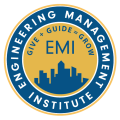Engineering is about solving problems, pushing boundaries, and creating solutions that improve our world. Yet, for many years, half the population has been underrepresented in this critical field. Women in engineering continue to break barriers, shatter stereotypes, and pave the way for the next generation of innovators. While progress has been made, challenges remain—and addressing them requires a collective effort to empower women in every facet of the profession.
The Challenge of Representation
Despite increased awareness and advocacy, women remain underrepresented in engineering. According to the U.S. Bureau of Labor Statistics, women account for only 16.5% of engineers in the United States. The reasons vary—from societal expectations to workplace culture and lack of visible role models—but the impact is clear: fewer women in engineering means a loss of diverse perspectives, creativity, and innovation in the field.
The problem isn’t just about numbers; it’s about visibility. A 2018 Harvard Business Review study highlighted that women in engineering often struggle with being seen and heard in male-dominated environments. Many report needing to work harder to prove their expertise and gain recognition for their contributions. To empower women in engineering, we must ensure they are seen, heard, and given equal opportunities to lead and innovate.
The Power of Mentorship and Community
One of the most effective ways to empower women in engineering is through mentorship and professional networks. Stanley Consultants emphasizes the importance of creating environments where women feel valued and confident to take on leadership roles. Mentors provide guidance, advocacy, and opportunities for women to gain the experience and assurance needed to thrive.
Organizations such as the Society of Women Engineers (SWE) and Women in Engineering ProActive Network (WEPAN) are actively working to create these spaces, offering scholarships, mentorship programs, and leadership development opportunities. Engaging in these networks helps empower women to advance their careers and shape the future of engineering.
Trailblazers Who Paved the Way
Women have made significant contributions to engineering, often without the recognition they deserve. Here are just a few influential women who have made an impact:
Emily Roebling (1834–1903): Played a critical role in the completion of the Brooklyn Bridge after her husband, the chief engineer, fell ill.
Katherine Johnson (1918–2020): A NASA mathematician whose calculations were instrumental in the success of U.S. space missions, including the Apollo moon landing.
Mary Jackson (1921–2005): NASA’s first Black female engineer, breaking barriers and paving the way for women in aeronautical engineering.
Ginni Rometty (b. 1957): Former CEO of IBM and a pioneer in technology and engineering leadership.
For more inspiring stories, check out 10 Influential Women in Engineering by ASME.
These trailblazers remind us that engineering thrives when we empower women to bring their talents, insights, and resilience to the field.
The Business Case for Diversity
Diversity in engineering isn’t just about fairness—it’s about better outcomes. Research consistently shows that diverse teams perform better, innovate faster, and solve complex problems more effectively than homogenous teams. According to a report by McKinsey & Company, companies with diverse leadership teams are 35% more likely to outperform their competitors in profitability.
Women bring unique perspectives to engineering challenges, enhancing creativity and problem-solving approaches. To empower women is to elevate the entire profession—encouraging more women to enter and stay in engineering is essential for its future.
Moving Forward: How We Can All Make a Difference
If we want to see more women thrive in engineering, it requires action at multiple levels—individual, organizational, and societal. Here are some practical steps to empower women and create lasting change:
Support STEM Education for Girls: Early exposure to science and engineering fosters confidence and interest. Programs like Girls Who Code and FIRST Robotics help young girls see themselves as future engineers.
Promote Inclusive Work Environments: Companies must prioritize equity in hiring, pay, and leadership opportunities while addressing unconscious bias in the workplace.
Encourage Mentorship and Sponsorship: Women in engineering benefit from having mentors who can offer guidance and sponsors who advocate for their career advancement.
Celebrate Achievements: Recognizing and amplifying the accomplishments of women engineers fosters a sense of belonging and inspires the next generation.
Challenge Stereotypes: Representation matters. When young girls see women succeeding in engineering roles, they are more likely to believe it’s a path they too can take.
The future of engineering is stronger when it is diverse, inclusive, and welcoming to all. Women in engineering have already made remarkable contributions, but there is still work to do to achieve true equity. When we empower women, we don’t just create opportunity—we build a better, more innovative future.
The question now is: What can you do to help break barriers and empower women to build the future of engineering?
About the Author

We would love to hear any questions you might have or stories you might share on utilizing the 80/20 rule and SMART goals for better decision-making.
Please leave your comments, feedback or questions in the section below.








